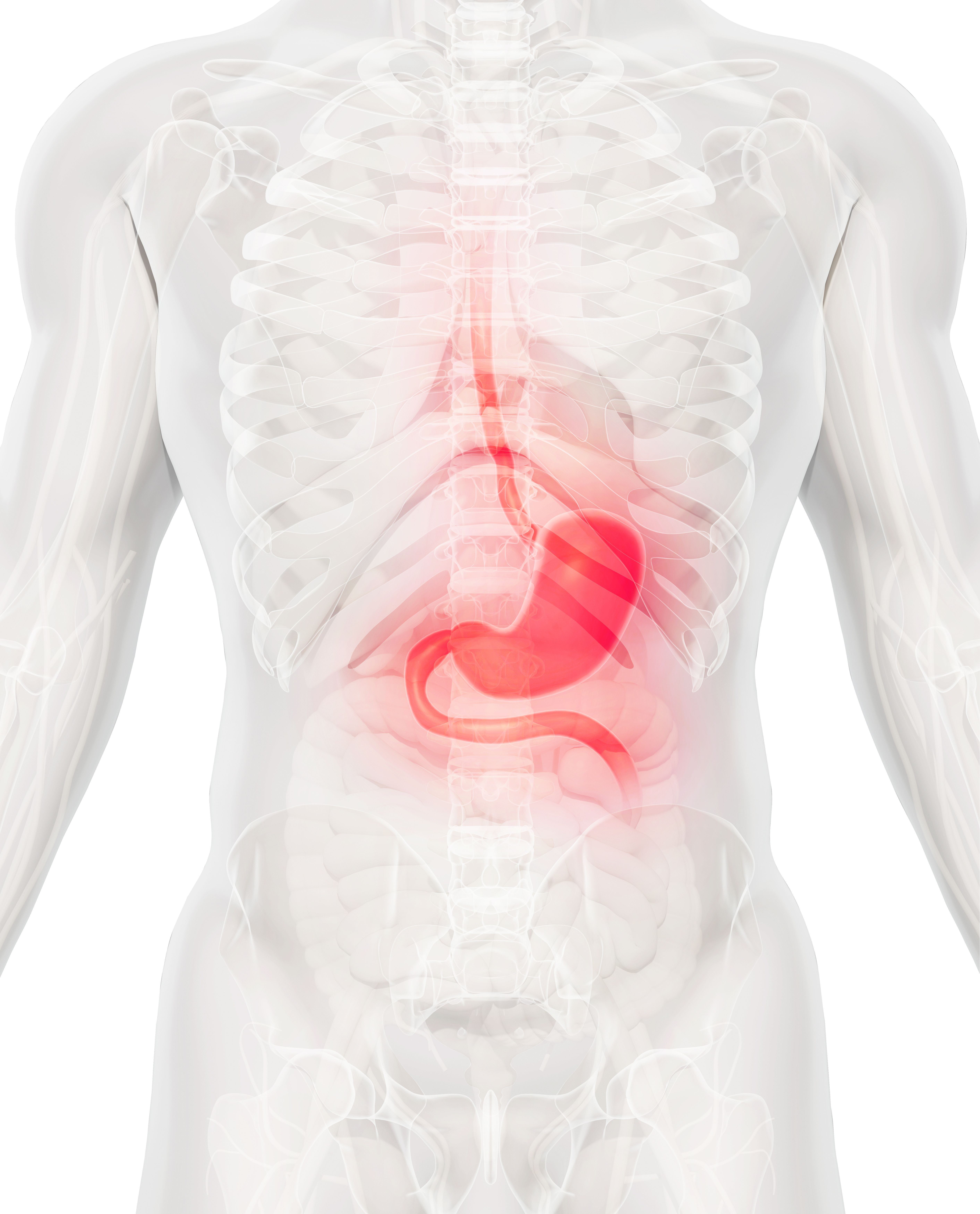Fruquintinib/Paclitaxel Improves PFS, ORR in Gastric/GEJ Adenocarcinoma
Findings from the FRUTIGA study support fruquintinib plus paclitaxel as a promising second-line treatment for those with advanced gastric or gastroesophageal junction adenocarcinoma following prior chemotherapy.
“Fruquintinib plus paclitaxel could be a promising second-line treatment option for patients with advanced gastric/GEJ adenocarcinoma who have [progressed on] fluoropyrimidine- or platinum-containing chemotherapy,” according to Rui-Hua Xu, MD, PhD.

Combining fruquintinib (Fruzaqla) with paclitaxel significantly improved progression-free survival (PFS), overall response rate (ORR), and disease control rate (DCR) compared with paclitaxel alone in patients with advanced gastric or gastroesophageal junction (GEJ) adenocarcinoma, according to findings from the phase 3 FRUTIGA study (NCT03223376) presented during an American Society of Clinical Oncology (ASCO) plenary session.
Across the intent-to-treat (ITT) population, the median PFS was 5.6 months (95% CI, 4.6-6.4) in patients who received the fruquintinib combination compared with 2.7 months (95% CI, 2.7-3.5) in those who were treated with paclitaxel alone (HR, 0.57; 95% CI, 0.48-0.68; P <.0001). The median overall survival (OS) was 9.6 months (95% CI, 8.9-10.8) vs 8.4 months (95% CI, 7.8-9.4) in each respective arm (HR, 0.96; 95% CI, 0.81-1.13; P = .6064). Additionally, 52.7% and 72.2% of patients from each arm proceeded to receive subsequent anti-cancer therapy. The median follow-up was 31.7 months.
Among patients in the fruquintinib/paclitaxel (n = 166) and paclitaxel monotherapy (n = 98) arms who did not receive subsequent anti-tumor treatment, respectively, the median OS was 6.9 months vs 4.8 months (HR, 0.72; 95% CI, 0.53-0.99; P = .0422). Data also indicated a median OS of 12.2 months and 10.0 months among patients in the fruquintinib/paclitaxel (n = 185) and paclitaxel alone (n = 254) groups who received subsequent anti-cancer treatment, respectively (HR, 0.90; 95% CI, 0.73-1.11; P = .3262). Overall, the fruquintinib-based regimen demonstrated an OS benefit regardless of subsequent anti-cancer treatment.
After adjusting for subsequent anti-cancer treatment and baseline characteristics, investigators highlighted a nominal but statistically significant OS benefit with the fruquintinib combination (HR range, 0.79-0.83; P range = .0105-.0350). Among patients with lymph node metastases and non-diffuse histology, the median OS was 9.6 months in fruquintinib/paclitaxel (n = 190) arm vs 7.9 months in those who received paclitaxel alone (n = 208; HR, 0.77; P = .0233).
Investigators reported an ORR of 42.5% (95% CI, 37.2%-47.8%) with the fruquintinib combination vs 22.4% (95% CI, 18.2%-27.2%) with paclitaxel alone (P <.0001). Complete responses were reported in 1.4% and 1.4% of patients in each respective arm, and partial responses occurred in 41.0% vs 21.0%. In each respective arm, the DCR was 77.2% (95% CI, 72.5%-81.5%) vs 56.3% (95% CI, 50.9%-61.5%; P <.0001), and the median duration of response (DOR) was 5.5 months (95% CI, 4.6-6.4) vs 3.7 months (95% CI, 3.7-4.6).
“Fruquintinib plus paclitaxel could be a promising second-line treatment option for patients with advanced gastric/GEJ adenocarcinoma who have [progressed on] fluoropyrimidine- or platinum-containing chemotherapy,” presenting author Rui-Hua Xu, MD, PhD, a professor of medical oncology at Sun Yat-sen University Cancer Center, State Key Laboratory of Oncology in South China, Collaborative Innovation Center for Cancer Medicine, said in a presentation on these findings.
In the double-blind phase 3 FRUTIGA study, 703 patients enrolled across 35 sites in China were randomly assigned 1:1 to receive fruquintinib at 4 mg orally once a day for 3 weeks on and 1 week off (n = 351) or matched placebo (n = 352) plus paclitaxel at 80 mg/m2 intravenously on days 1, 8, and 15 of every 4-week cycle.
The trial’s dual-primary end points were PFS and OS. Secondary end points included ORR, DOR, DCR, safety, and quality of life.
Patients with advanced gastric or GEJ adenocarcinoma that had progressed following prior treatment with fluoropyrimidine- or platinum-based chemotherapy were eligible to enroll on the trial. Having an ECOG performance status of 0 or 1 was another requirement for enrollment.
The median patient age was 57.0 years (range, 24-75) in the fruquintinib arm and 59.0 years (range, 25-75) in the placebo arm. Of note, most patients in each respective arm had an ECOG performance status of 1 (85.2% vs 85.2%), a primary tumor located in the stomach (82.9% vs 83.0%), and no peritoneal metastases (68.7% vs 70.5%).
Investigators highlighted a median treatment duration of 4.5 months (range, 0.26-41.40) in the fruquintinib arm compared with 2.6 months (range, 0.43-40.05) in the placebo arm. Additionally, the median relative dose intensity was 97.6% (range, 47.60%-104.76%) for fruquintinib and 100.0% (range, 25.00%-103.57%) with placebo.
Any-grade treatment-emergent adverse effects (TEAEs) occurred in 99.4% of the fruquintinib arm and 99.4% of those who received paclitaxel alone. Grade 3 or higher TEAEs affected 86.9% and 63.3% of patients in each respective arm, and serious TEAEs were reported in 38.6% and 19.2%.
The most common any-grade TEAEs in the fruquintinib and placebo arms, respectively, included leukopenia (86.3% vs 73.6%), neutropenia (84.0% vs 72.8%), and anemia (60.3% vs 59.9%). Additionally, grade 3 or higher toxicities included neutropenia (60.0% vs 36.4%), leukopenia (42.9% vs 23.5%), and anemia (11.7% vs 10.6%).
Reference
Xu R, Wang F, Shen L, et al. Fruquintinib plus paclitaxel versus paclitaxel as second-line therapy for patients with advanced gastric or gastroesophageal junction adenocarcinoma (FRUTIGA): a randomized, multicenter, double-blind, placebo-controlled, phase 3 study. J Clin Oncol. 2024;42(suppl 36):438780. doi:10.1200/JCO.2024.42.36_suppl.438780